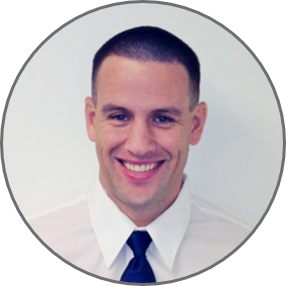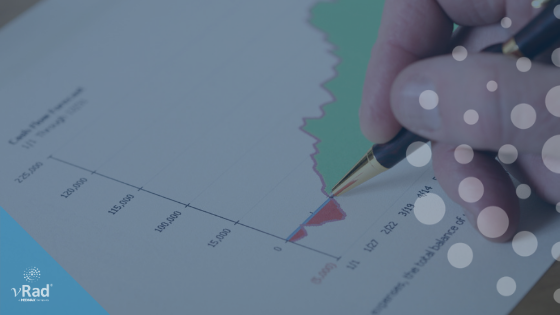1 min read
Women Breadwinners: Relationship Tips for Couples with the Woman as the Higher Earner
In the U.S., 22% of marriages have women breadwinners over the age of 30[1]. These relationships face unique challenges and experience as much as 50%...

Remote radiologist jobs with flexible schedules, equitable pay, and the most advanced reading platform. Discover teleradiology at vRad.

Radiologist well-being matters. Explore how vRad takes action to prevent burnout with expert-led, confidential support through our partnership with VITAL WorkLife. Helping radiologists thrive.

Visit the vRad Blog for radiologist experiences at vRad, career resources, and more.

vRad provides radiology residents and fellows free radiology education resources for ABR boards, noon lectures, and CME.

Teleradiology services leader since 2001. See how vRad AI is helping deliver faster, higher-quality care for 50,000+ critical patients each year.

Subspecialist care for the women in your community. 48-hour screenings. 1-hour diagnostics. Comprehensive compliance and inspection support.

vRad’s stroke protocol auto-assigns stroke cases to the top of all available radiologists’ worklists, with requirements to be read next.

vRad’s unique teleradiology workflow for trauma studies delivers consistently fast turnaround times—even during periods of high volume.

vRad’s Operations Center is the central hub that ensures imaging studies and communications are handled efficiently and swiftly.

vRad is delivering faster radiology turnaround times for 40,000+ critical patients annually, using four unique strategies, including AI.
.jpg?width=1024&height=576&name=vRad-High-Quality-Patient-Care-1024x576%20(1).jpg)
vRad is developing and using AI to improve radiology quality assurance and reduce medical malpractice risk.

Now you can power your practice with the same fully integrated technology and support ecosystem we use. The vRad Platform.

Since developing and launching our first model in 2015, vRad has been at the forefront of AI in radiology.

Since 2010, vRad Radiology Education has provided high-quality radiology CME. Open to all radiologists, these 15-minute online modules are a convenient way to stay up to date on practical radiology topics.

Join vRad’s annual spring CME conference featuring top speakers and practical radiology topics.

vRad provides radiology residents and fellows free radiology education resources for ABR boards, noon lectures, and CME.

Academically oriented radiologists love practicing at vRad too. Check out the research published by vRad radiologists and team members.

Learn how vRad revolutionized radiology and has been at the forefront of innovation since 2001.

%20(2).jpg?width=1008&height=755&name=Copy%20of%20Mega%20Nav%20Images%202025%20(1008%20x%20755%20px)%20(2).jpg)

Visit the vRad blog for radiologist experiences at vRad, career resources, and more.


Explore our practice’s reading platform, breast imaging program, AI, and more. Plus, hear from vRad radiologists about what it’s like to practice at vRad.

Ready to be part of something meaningful? Explore team member careers at vRad.
3 min read
 Joshua Albrektson, MD
:
November 23, 2020
Joshua Albrektson, MD
:
November 23, 2020
.png)
Because I work as a teleradiologist, I (thankfully) no longer have to commute to get to work. Living in southern California, traffic is one of the things I do not miss at all. I used to spend a lot of time behind the wheel driving to the hospital where I worked, thinking of ways I could make my commute faster and more efficient. Admittedly, I’m a bit obsessive when it comes to time and efficiency, especially in the way I work.
Inefficiencies on the road that cause traffic congestion aren’t really all that different from the barriers which can slow down our work: volume, technology, infrastructure and time. I want to get where I’m going (a diagnosis) via the best, safest route possible. But I also don’t want to waste time. It’s all about finding a balance between accuracy and speed. After all, incremental improvements in speed can add up to big gains in performance and ultimately, compensation.
As radiologists, there are things we can do to make our work more accurate. We can take CME courses, review common misses, take more time to read and change search patterns. There are also things that we as doctors can do to make us faster using the tools at our disposal, especially with computers and voice dictation assisting in making reports. As someone who has worked with many different systems, I’ve found that vRad’s platform is by far the best at helping cut out the inefficiencies, especially compared to processes I’ve worked with in the past. I’ve also found that vRad’s platform lets me work to my potential and earn more.
Back when I was a resident we used people to transcribe the studies. We spoke into the phone, dictated the headers, views, indications, and then covered all over the different systems where you had to say everything. Thirty minutes later we’d get a report to proofread and then click send. It was very inefficient. Even normal studies would take 30-40 seconds just to say all of the normal things. Over the course of a shift or the week, those seconds would add up and slow things down. It felt like being stuck in traffic.
vRad has a much better system. Everything that can be pulled from the patient's chart is right there in front of you, so you don’t have to repeat things that you are simply reading from a computer screen. Plus, you can use macros to say many of the things you would normally have to say over and over… and over. So now if I find myself saying the same thing more than 5 times a month, I’ll make a macro for it. In fact, I can create my own system for each thing I routinely say.

For example, I’ve made marcos for all of the normal positive findings I see. I have a “Positive appendicitis” where it creates a macro describing an appendix where I just need to put in the size. It also has an impression of “Positive appendicitis with no evidence of perforation.” Other examples include “Large spleen 13” to “Large spleen 22” where it describes splenomegaly going from 13 inches to 22 inches. I have an “Ultrasound gallstones” macro where it describes a RUQ ultrasound that has a nondistended gallbladder with multiple gallstones. The vRad system ensures that I can cut out most of the talking I have to do and creates a report that ensures the things I said don’t have voice recognition errors.
Another aspect of the vRad platform that I really appreciate is the ability to eliminate any non-necessary information or “noise” so that I can focus only on the issue at hand. Since the system breaks it down by body parts, if I’m reading a spleen for example, I can have a macro that just says “gallstones” which compartmentalizes the data that I need to review. I don’t have to put up three or four different views, or take time to enter basic information because the platform auto-populates the screen with the information I need. This helps me with both speed and accuracy.
Finally, and this is something that I’ve wanted for years, I can click “next case” without having to enter any new information. This might sound like a small detail because saving fifteen or twenty seconds might not sound like a lot of time, over the course of a work week, you're able to read more, you're able to get results out faster. This efficiency is actually one of the key reasons I decided to join vRad.
If you are not familiar with the vRad platform, I highly recommend checking out Dr. Benjamin Strong’s video tour of how it works.
When I’m working more efficiently, I’m a better part of the team. The ER physicians I work with might not notice that I get results of one case to them thirty seconds faster, but it adds up. At the end of a shift or the week, my increased efficiency helps them get to their patients faster. Another thing that adds up is my earnings. I get paid by the study, so if I can do something that makes me 10% faster, that 10% increase in efficiency translates into a 10% raise. I like being in the driver’s seat when it comes to my earning potential.

1 min read
In the U.S., 22% of marriages have women breadwinners over the age of 30[1]. These relationships face unique challenges and experience as much as 50%...

The demand for imaging studies is expected to continue to increase for the foreseeable future. However, the number of radiologists on hand to perform...
.png)
Compensation is one of the most important factors when considering your next career move. You should never have to wonder what you’re earning or how...
vRad (Virtual Radiologic) is a national radiology practice combining clinical excellence with cutting-edge technology development. Each year, we bring exceptional radiology care to millions of patients and empower healthcare providers with technology-driven solutions.
Non-Clinical Inquiries (Total Free):
800.737.0610
Outside U.S.:
011.1.952.595.1111
3600 Minnesota Drive, Suite 800
Edina, MN 55435